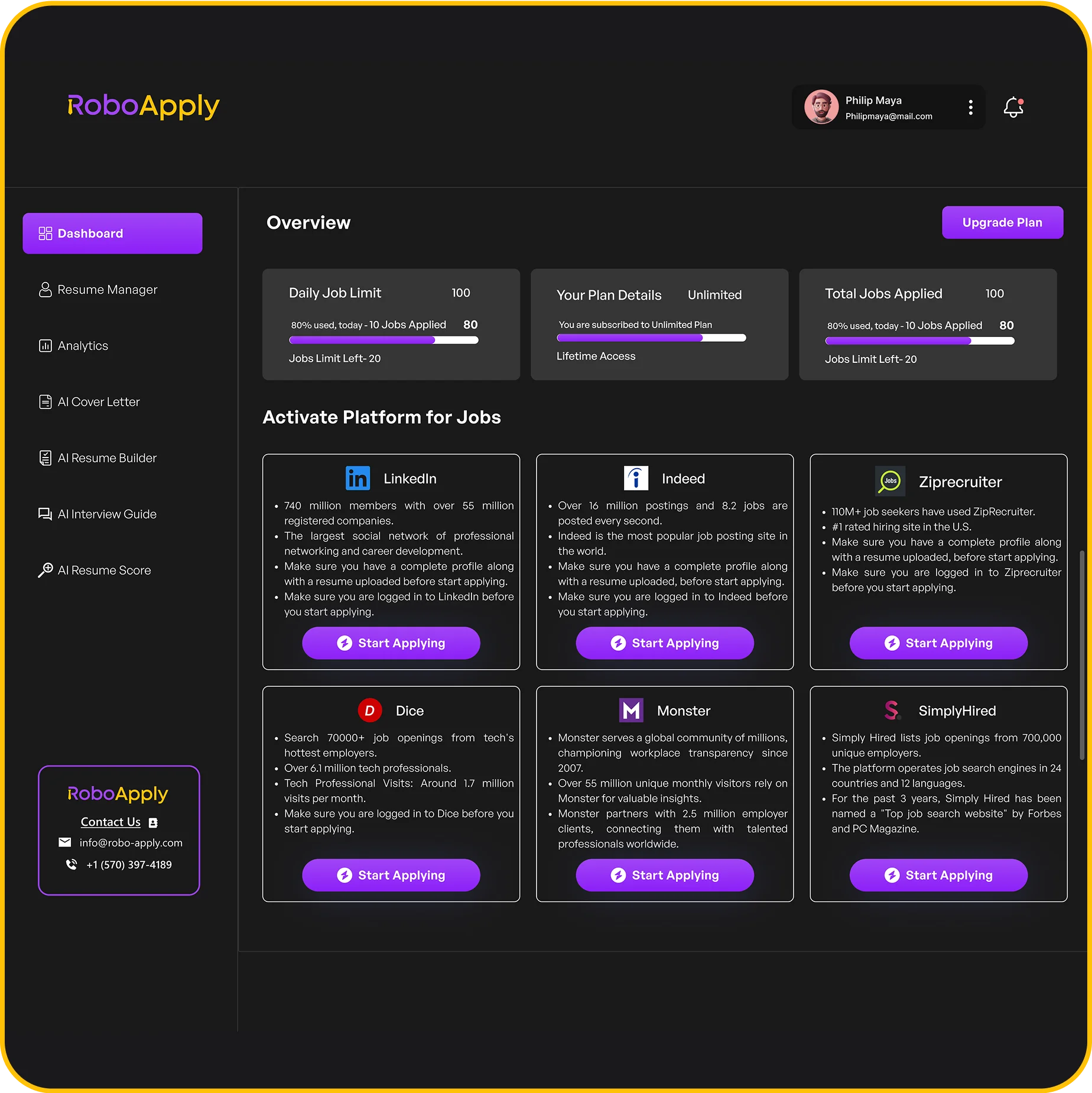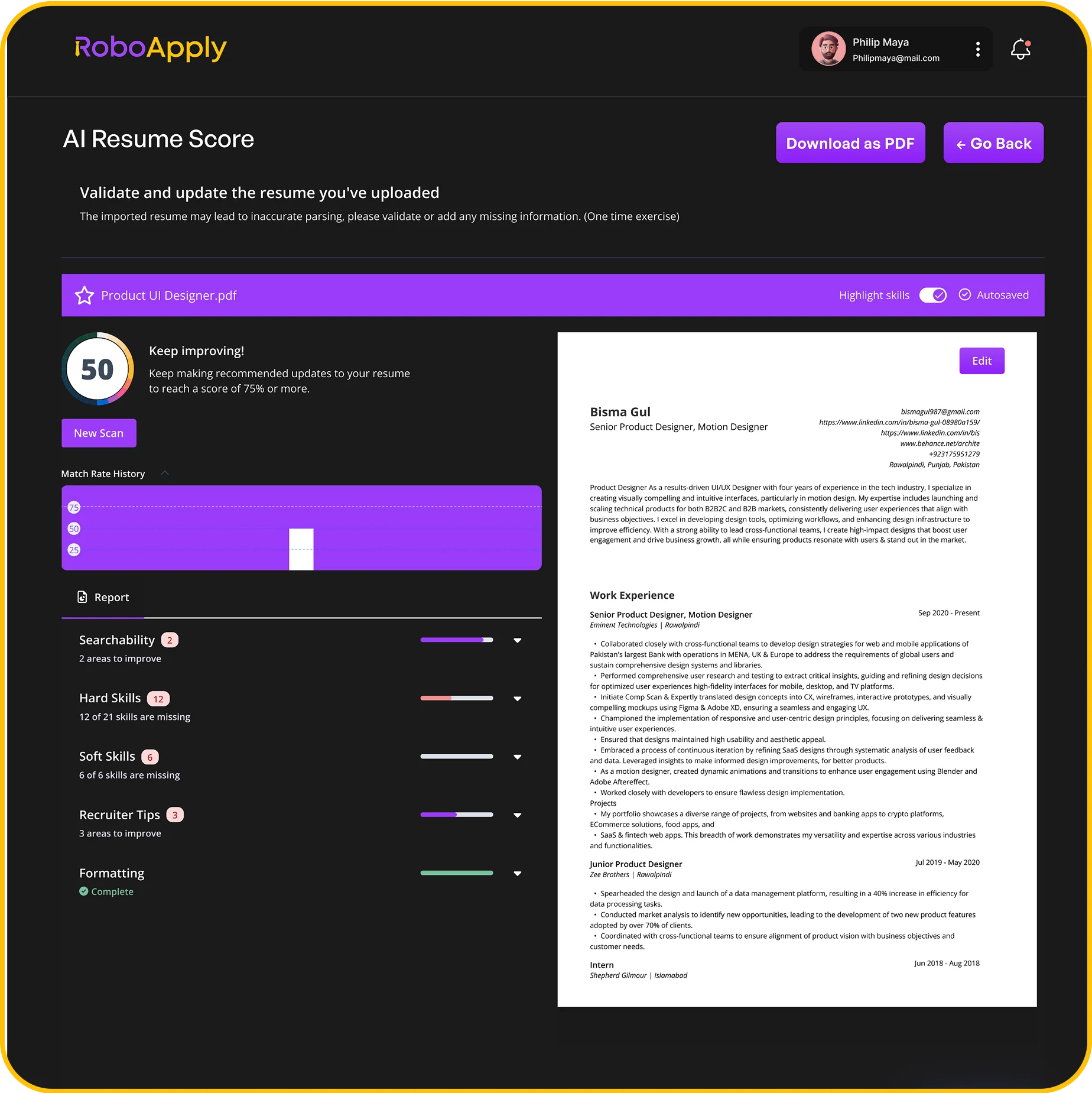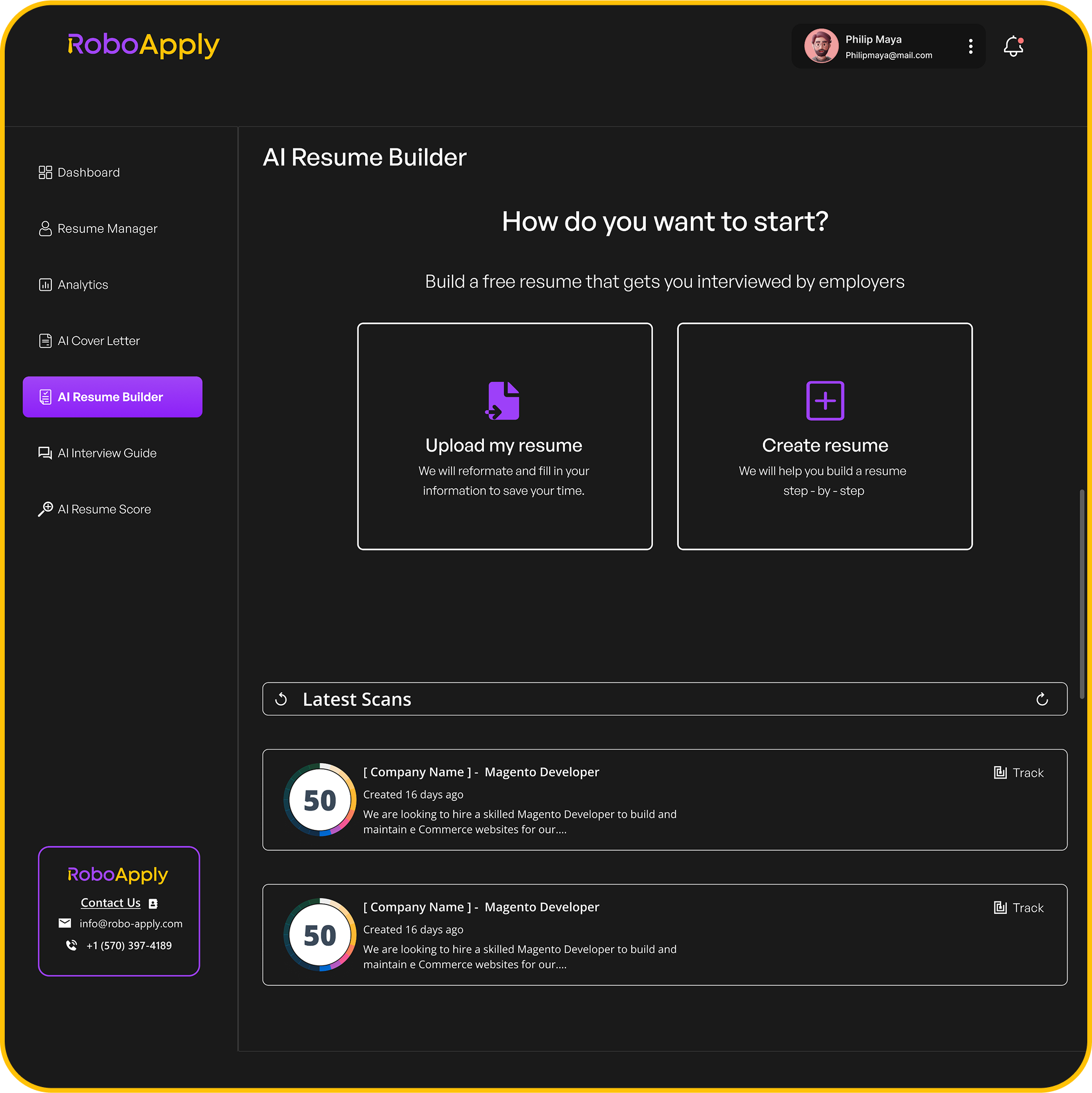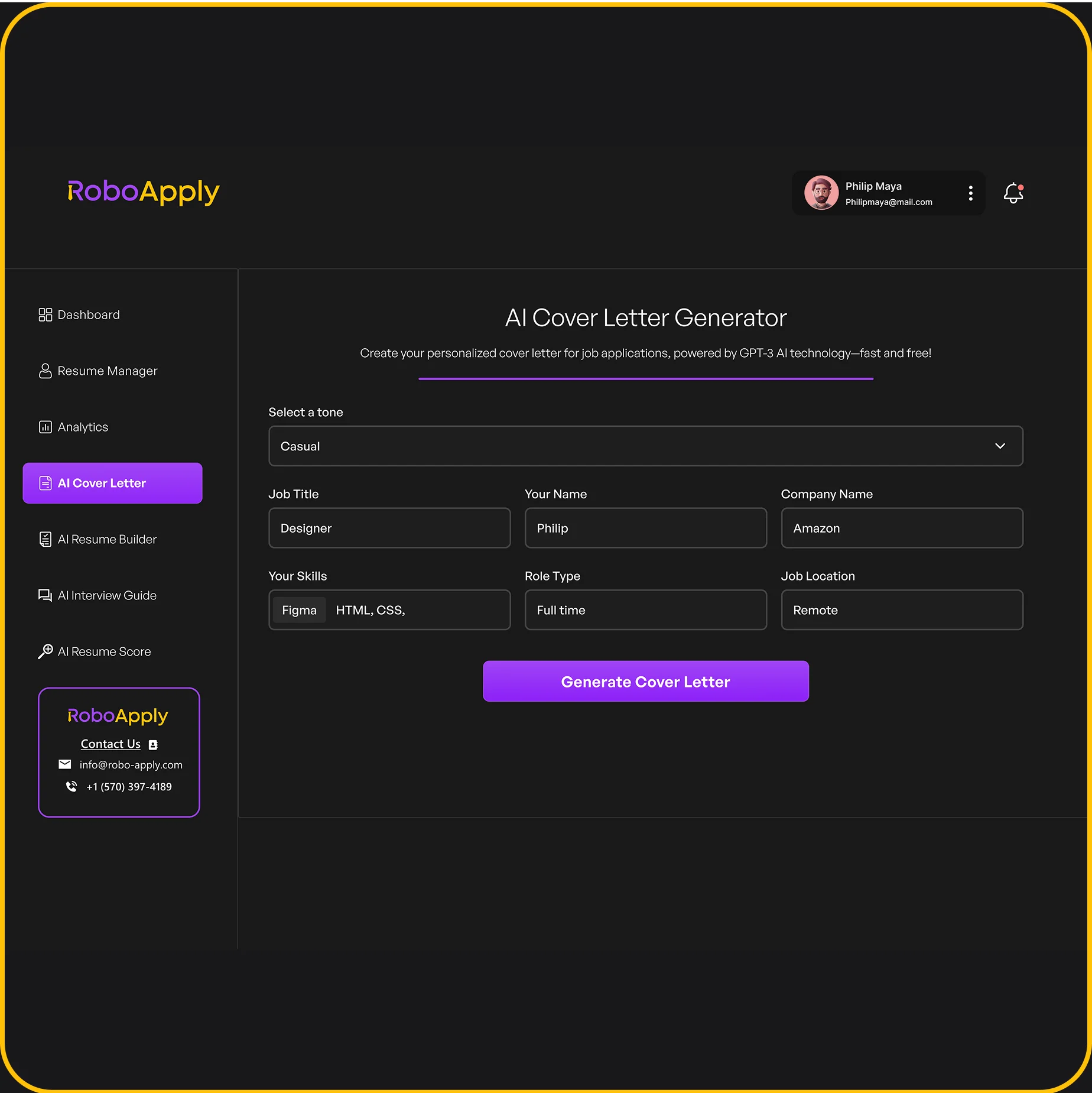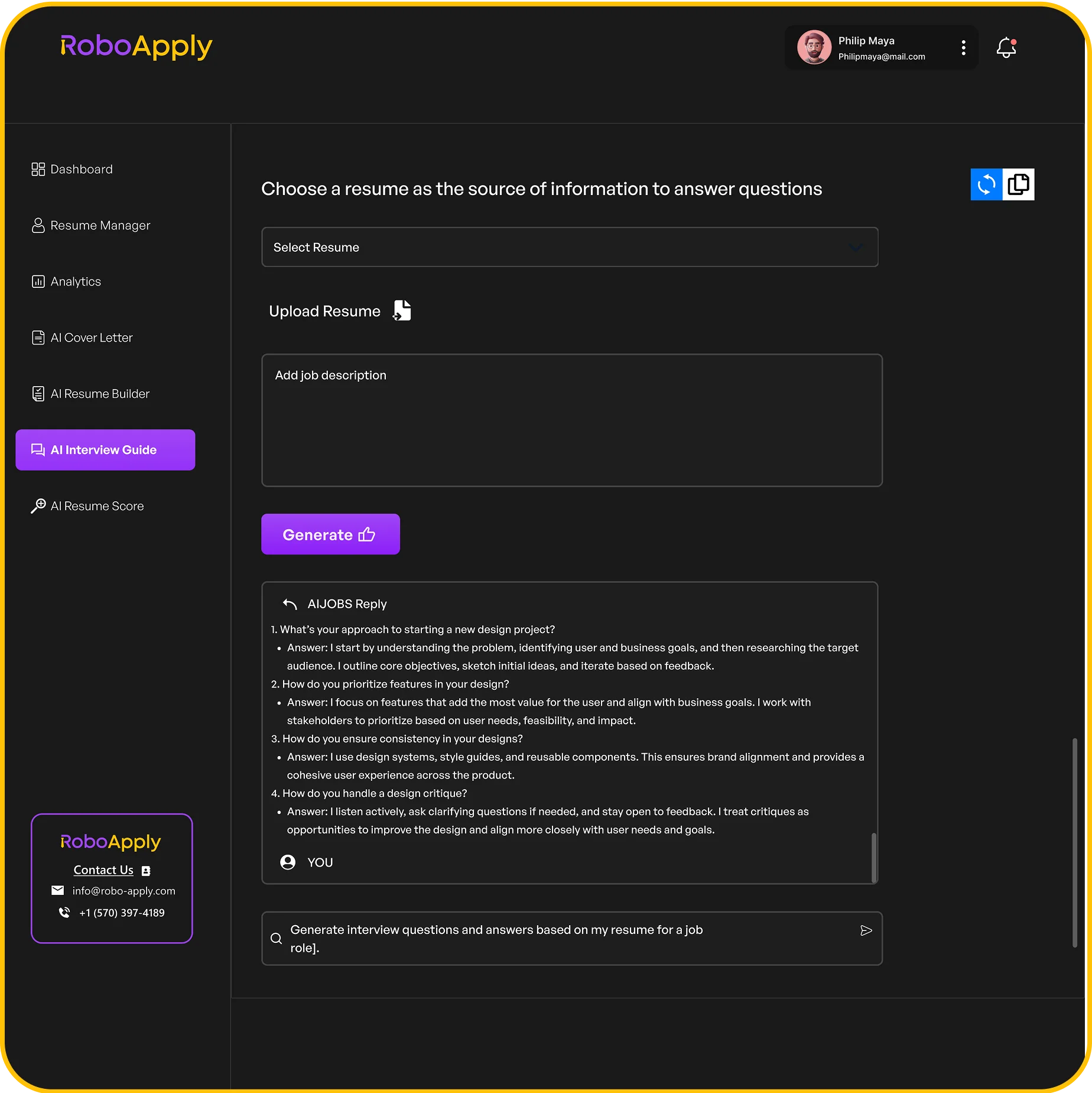When you’re on the job hunt, you might wonder if you really need to submit a cover letter along with your resume. It’s a valid question and honestly, opinions vary. Some people say cover letters are outdated, while others believe they still hold value. In this article, we’ll break down the reasons you might want to include a cover letter and when it might be better to skip it altogether.
Key Takeaways
- A cover letter can showcase your interest and effort in the job application process.
- It’s essential to include a cover letter if the job posting specifically requests it.
- Not all job applications require a cover letter, especially if it’s not mentioned.
- Tailoring your cover letter to the specific job can make a significant difference.
- Submitting both a cover letter and a resume can strengthen your overall application.
Understanding The Role Of A Cover Letter And A Resume
Defining A Cover Letter
Okay, so what is a cover letter anyway? Think of it as your introduction, your chance to show some personality beyond the bullet points of your resume. It’s where you tell the story of why you’re a great fit for this specific job. It’s not just repeating your resume; it’s expanding on it, connecting your experience to the company’s needs. It shows you’ve actually put some thought into why you want the job, not just mass-applying everywhere. It’s a way to screen them out from the applicant pool.
Defining A Resume
Your resume is the highlight reel of your professional life. It’s a structured document that outlines your skills, experience, and education. It’s all about facts and figures, presented in a clear, easy-to-read format. Think of it as a quick reference guide for recruiters. It needs to be concise and relevant, highlighting your achievements and demonstrating your qualifications for the job. It’s the first thing recruiters look at to see if you even meet the basic requirements. You can use resume templates to make sure it matches your cover letter.
The Relationship Between The Two
So, how do these two documents work together? Your resume provides the what – what you’ve done, what skills you have. Your cover letter provides the why – why you’re interested in the job, why you’re a good fit for the company, and why they should hire you. They complement each other, with the cover letter adding context and personality to the resume’s factual information. It’s like this: the resume gets you in the door, but the cover letter seals the deal. A personal referral can also help your application stand out.
Think of your resume as a summary of your qualifications, and your cover letter as a sales pitch. The resume shows what you can do, while the cover letter explains why you’re the best person for the job. They work together to create a complete picture of you as a candidate.
Here’s a quick breakdown:
- Resume: Facts, skills, experience, education.
- Cover Letter: Personality, motivation, connection to the job.
- Together: A complete and compelling application.
The Importance Of A Cover Letter
Demonstrating Your Interest
A cover letter is a great way to show you’re actually interested in the job. It’s more than just sending in a resume; it’s about showing you’ve done your homework and care about the company. Think of it as your chance to say, “Hey, I really want this job, and here’s why.” Companies want to hire people who are excited to be there, and a well-written cover letter can really demonstrate effort.
Highlighting Key Skills
Your resume lists your skills, but a cover letter lets you explain how you’ve used them. It’s your chance to tell a story and give context to your abilities. For example, instead of just saying you have “leadership skills,” you can describe a time you led a team to success. This is especially useful if you’re trying to make a career change or have skills that aren’t immediately obvious from your resume. It’s a chance to connect the dots for the hiring manager and show them why you’re a good fit, even if your background isn’t a perfect match.
Setting Yourself Apart
In a pile of applications, a good cover letter can make you stand out. It’s your chance to show your personality and let the hiring manager see who you are beyond your work history. It’s also a place to address anything unusual about your application, like a career gap or a need to relocate. A cover letter lets you be more personal and show why you’re the best choice. It’s a chance to showcase your personality and make a memorable impression.
A cover letter is your opportunity to make a personal connection with the hiring manager. It allows you to express your enthusiasm for the role and the company, and to explain why you are a strong candidate in a way that a resume simply cannot convey.
When To Include A Cover Letter
While it’s often a good idea to send a cover letter, there are specific situations where it becomes particularly important. Knowing when to include one can significantly improve your chances of making a strong first impression.
Job Postings That Request One
This might seem obvious, but it’s worth stating: if a job posting explicitly asks for a cover letter, you should always include one. Failing to do so can immediately disqualify you from consideration. Think of it as following instructions; it shows you pay attention to detail and respect the employer’s requirements. It’s a simple way to demonstrate your interest in the role. If the job description mentions to include a cover letter for nursing job applications, make sure you do so.
Industry Standards
Certain industries still heavily rely on cover letters as a standard practice. For example, fields like academia, journalism, and non-profit organizations often expect candidates to submit a cover letter along with their resume. Researching industry norms can provide valuable insight. If you’re unsure, it’s generally better to err on the side of caution and include a well-crafted cover letter. It shows you understand the expectations of the field and are willing to go the extra mile.
Company Culture Considerations
Consider the company’s culture when deciding whether to include a cover letter. Some companies value formality and tradition, while others prioritize a more relaxed approach. You can often get a sense of a company’s culture by visiting their website, reading their mission statement, and reviewing their social media presence. If the company emphasizes personalization and storytelling, a cover letter can be a great way to showcase your personality and connect with the hiring manager on a more personal level. If the company seems more focused on efficiency and brevity, a concise and targeted cover letter might be more appropriate.
Including a cover letter when it’s not explicitly required can still be beneficial. It provides an opportunity to highlight your skills, demonstrate your enthusiasm, and explain why you’re a good fit for the role. However, it’s important to ensure that your cover letter is well-written, tailored to the specific job, and adds value to your application. A generic or poorly written cover letter can actually hurt your chances of getting an interview.
Here are some key points to remember:
- Always include a cover letter when requested.
- Consider industry standards and company culture.
- Tailor your cover letter to the specific job and company.
When Not To Include A Cover Letter
No Request In The Job Posting
Sometimes, the job posting will tell you exactly what they want. If it doesn’t ask for a cover letter, don’t send one. It’s best to follow the instructions. Companies might not want them to streamline the application process, or they might just not find them useful. Sending one anyway might show you don’t pay attention to details. It’s like when you bring a dish to a potluck, and the host specifically said not to bring anything – it’s just awkward.
Lack Of Time For Customization
A generic cover letter is worse than no cover letter at all. If you’re applying to a ton of jobs and don’t have time to write a unique cover letter for each one, skip it. A bad, template-based cover letter can hurt your chances more than help them. It shows a lack of effort and attention to detail. Think of it like sending the same birthday card to everyone – it feels impersonal and insincere.
Application Platform Limitations
Sometimes, the application system itself won’t give you a place to upload a cover letter. If you’re filling out an online application and there’s no option to submit one, that’s a pretty clear sign it’s not needed. Don’t try to force it by combining it with your resume or emailing it separately unless specifically instructed. It’s like trying to fit a square peg in a round hole – it just doesn’t work. If there’s no upload option, take the hint.
Crafting An Effective Cover Letter
Tailoring To The Job
Okay, so you’re actually going to write a cover letter. That’s great! But don’t just send the same generic thing to every place. It’s like wearing the same outfit to a wedding and a football game – it just doesn’t fit. Your cover letter needs to be a custom fit for each specific job. Read the job description carefully. What are they really looking for? What problems do they need to solve? Then, show how your skills and experience directly address those needs. It’s not about what you want; it’s about what you can do for them. Think of it as writing a targeted sales pitch, where you’re the product. Make sure to highlight your professional experience and how it aligns with the company’s culture.
Using Action Verbs
Your cover letter isn’t a novel; it’s a concise summary of your awesomeness. Ditch the passive voice and weak verbs. Instead, use strong action verbs to describe your accomplishments. Instead of saying “I was responsible for managing social media,” say “Managed social media channels, increasing engagement by 30% in six months.” See the difference? It’s more direct, more impactful, and shows what you actually did. Here’s a few to get you started:
- Implemented
- Developed
- Led
- Achieved
- Improved
Using action verbs makes your accomplishments sound more impressive and demonstrates your proactive nature. It shows you’re not just someone who sits back and waits for things to happen; you’re someone who takes initiative and gets results.
Maintaining Consistent Branding
Think of your resume and cover letter as a matched set. They should have a similar look and feel, using the same fonts, colors, and overall style. This creates a cohesive brand and makes you look more professional. It shows you pay attention to detail and care about how you present yourself. It’s like having a well-designed business card – it leaves a lasting impression. If your resume is modern and minimalist, your cover letter should be too. If your resume uses a specific color scheme, carry that over to your cover letter. Consistency is key. It’s a small thing, but it can make a big difference. It’s all about making a personal referral and showing you’re serious about the job.
Common Misconceptions About Cover Letters
Are They Always Necessary?
It’s a common belief that cover letters are always needed, but that’s not quite right. While they can be helpful, there are times when sending one isn’t necessary or even recommended. For example, if the job posting specifically says not to include a cover letter, or if you’re applying through a system that doesn’t allow you to upload one, it’s best to respect those instructions. Submitting a cover letter when it’s not requested might even make you look like you can’t follow directions.
Do Recruiters Read Them?
Another misconception is that recruiters never read cover letters. While it’s true that some recruiters might only glance at them, many do take the time to read them, especially for roles that require strong communication skills or a specific type of experience. A well-written cover letter can definitely help you stand out from the crowd. It’s a chance to show your personality and explain why you’re a good fit for the job in a way that a resume can’t always do. Think of it as a way to add a personal touch to your job application.
Can They Replace A Resume?
Some people think a cover letter can replace a resume, but that’s not the case. A resume is a summary of your skills and experience, while a cover letter is an introduction and a way to highlight specific qualifications. They serve different purposes and should be used together to create a complete picture of your qualifications. A cover letter should complement your resume, not duplicate it. If you don’t have time to personalize it, it’s better not to send one at all. Here are some things to consider:
- A generic cover letter can hurt your chances.
- A well-written cover letter can make a big difference.
- Always tailor your cover letter to the specific job.
It’s important to remember that a cover letter is a tool to enhance your application, not a replacement for other important documents. Make sure you have a strong resume and tailor your cover letter to each job you apply for to maximize your chances of success.
The Benefits Of Submitting Both
Submitting both a cover letter and a resume can significantly improve your chances of landing an interview. While a resume provides a factual overview of your work history and skills, a cover letter allows you to add a personal touch and explain why you are a good fit for the specific role and company. It’s about making a strong, well-rounded first impression.
Comprehensive Representation
Submitting both documents allows for a more complete picture of you as a candidate. Your resume showcases your qualifications, while your cover letter demonstrates your personality and enthusiasm. This combination gives recruiters a better sense of who you are beyond just your work experience. It’s like showing them the highlights reel and then explaining the story behind the best plays.
Demonstrating Effort
In a competitive job market, showing that you’re willing to go the extra mile can make a big difference. Submitting a well-crafted cover letter alongside your resume signals to employers that you are genuinely interested in the position and willing to put in the effort to present yourself in the best possible light. It shows you care enough to tailor your application, which speaks volumes about your work ethic. Recruiters notice these things, even if they don’t always explicitly say so. It shows you are willing to put in extra effort.
Enhancing Your Application
Think of your application as a package. A resume is the core, but the cover letter is the wrapping that makes it stand out. It provides context, fills in gaps, and allows you to address any potential concerns an employer might have. By including both, you’re not just submitting an application; you’re presenting a compelling case for why you should be hired. It’s about making your application as strong and persuasive as possible. Combining a resume and cover letter is a great way to present your qualifications.
Submitting both a resume and a cover letter demonstrates a commitment to the application process. It shows you’re not just going through the motions but are genuinely invested in the opportunity. This can be a deciding factor when employers are choosing between equally qualified candidates.
Tips For Writing A Strong Resume
Formatting Best Practices
When it comes to your resume, how it looks is almost as important as what it says. Think of it as your first impression – you want it to be clean, easy to read, and professional. A hiring manager might only spend a few seconds scanning it, so make those seconds count. Here are some key things to keep in mind:
- Use a clear and readable font. Avoid anything too fancy or small. Arial, Calibri, or Times New Roman in size 11 or 12 are generally safe bets.
- Keep consistent margins. Usually, one inch on all sides is standard.
- Use bullet points to break up large blocks of text. This makes it easier for recruiters to quickly scan your skills and experience.
- Consider using a professional template. There are tons of free and paid templates available online that can help you create a polished look. Just make sure it’s ATS-friendly (Applicant Tracking System), meaning it can be easily read by computer systems.
Remember, your resume should be easy on the eyes. A cluttered or confusing resume can be an instant turn-off, no matter how qualified you are.
Highlighting Achievements
It’s not enough to just list your job duties. You need to show what you achieved in each role. This is where you can really make your resume stand out. Instead of saying “Responsible for customer service,” try something like “Improved customer satisfaction scores by 15% through proactive issue resolution.” Here’s how to do it:
- Use the STAR method (Situation, Task, Action, Result) to describe your accomplishments. This helps you provide context and demonstrate the impact of your work.
- Quantify your achievements whenever possible. Numbers speak volumes. Did you increase sales? Reduce costs? Improve efficiency? Use specific figures to back up your claims.
- Focus on the most relevant achievements for the job you’re applying for. Tailor your resume to each position to show that you’re a good fit.
| Achievement | Description italics are great, but don’t overdo it.
Including Relevant Experience
This might seem obvious, but it’s worth repeating: make sure the experience you include on your resume is relevant to the job you’re applying for. Don’t just list every job you’ve ever had. Focus on the ones that demonstrate the skills and qualifications the employer is looking for. If you’re applying for a marketing position, your experience as a camp counselor probably isn’t relevant (unless you can somehow tie it back to marketing skills, like communication or leadership). Here’s how to make sure your experience is on point:
- Carefully read the job description and identify the key skills and qualifications. Then, think about how your past experience aligns with those requirements.
- Use keywords from the job description in your resume. This helps your resume get past the ATS and shows the employer that you understand what they’re looking for.
- Prioritize your most relevant experience. Put it at the top of your resume and give it more detail. You can include less relevant experience further down, with less detail.
It’s a good idea to submit a cover letter with your resume.
The Impact Of A Cover Letter On Your Job Search
Influencing Recruiter Decisions
Cover letters can really sway a recruiter’s opinion. Think of it as your chance to make a first impression that goes beyond just listing your skills. A well-written cover letter shows you’re serious about the job and the company. It’s a way to connect the dots between your past experiences and what the job requires. Recruiters often have to sift through tons of applications, and a cover letter that grabs their attention can make yours stand out. It shows you’ve taken the time to understand the role and how you fit in. If you have a personal referral, make sure to mention it!
Building A Personal Connection
A cover letter lets you show off your personality in a way a resume can’t. It’s your chance to write in your own voice and show your enthusiasm for the job. This is super important for building a personal connection with the hiring manager. You can talk about why you’re drawn to the company’s mission or culture, or share a story that shows your passion for the field. It’s about making them see you as more than just a list of skills and experiences. It’s about showing them who you are and why you’d be a great fit for their team.
Addressing Potential Concerns
Cover letters are great for tackling any red flags or weird stuff in your work history. Got a gap in your employment? Changing careers? A cover letter lets you explain the situation in your own words. It’s a chance to provide context and reassure the hiring manager that you’re still a strong candidate. For example, if you have a career gap, you can address it head-on and explain what you did during that time. It’s all about being upfront and honest, and showing that you’ve thought about these issues and have a plan for moving forward.
A cover letter is not valued equally by all companies, industries, or positions. Some companies put a lot of emphasis on it because they want to identify a specific skill or passion. Others may see a cover letter as a sign that the applicant cares enough to put more thought into the application.
Examples Of Effective Cover Letters
Template Overview
Let’s break down what makes a cover letter effective. It’s not just about repeating your resume; it’s about telling a story. A good template provides a structure to highlight your unique value. Think of it as a framework to showcase your personality and enthusiasm, connecting your skills directly to the job requirements. A strong template includes:
- A compelling opening that grabs the reader’s attention.
- Clear and concise paragraphs that highlight relevant experience.
- A strong closing that reiterates your interest and calls for action.
A template is just a starting point. The real magic happens when you tailor it to each specific job, demonstrating that you’ve done your research and understand the company’s needs.
Real-World Examples
Okay, let’s get practical. Imagine Sarah, applying for a marketing manager position. Instead of just listing her skills, she starts her cover letter with a brief anecdote about how she increased social media engagement by 30% in her previous role. This immediately shows her capabilities. Another example is John, who is applying for a software engineer position. He uses his cover letter to explain a career gap, framing it as a period of self-directed learning where he mastered new programming languages. These real-world examples show how a cover letter can add value to your application and shows that you are interested in the company or the job. A personal referral can also be mentioned in the cover letter.
Common Mistakes To Avoid
Time to talk about what not to do. One of the biggest mistakes is sending a generic cover letter. Recruiters can spot these a mile away, and it shows a lack of effort. Another common pitfall is simply regurgitating your resume. Your cover letter should complement your resume, not duplicate it. Also, avoid clichés like “I’m a hard worker” or “I’m a team player.” Instead, provide specific examples that demonstrate these qualities. Proofread your cover letter. Once you’re done writing, make sure your cover letter doesn’t have any grammar or spelling mistakes. Use spell check software such as Grammarly to be on the safe side. A well-written cover letter is a testament to your writing skills, but the opposite is true. If you don’t want to spend the time crafting a pitch-perfect cover letter that highlights your skills, do not bother. A cover letter reflects the work you are willing to put into the job.
The Future Of Cover Letters And Resumes
Trends In Job Applications
The way we apply for jobs is always changing. What worked five years ago might not cut it today. We’re seeing a big shift towards online applications and the use of applicant tracking systems (ATS). These systems scan resumes for keywords, making it crucial to tailor your resume to each job description. Video resumes are also becoming more popular, offering a way to showcase personality and communication skills beyond what a traditional resume can convey. It’s a good idea to keep an eye on these trends and adapt your approach accordingly.
The Role Of Technology
Technology is playing a bigger role in how we create and submit job applications. AI-powered tools can help you write better resumes and cover letters by suggesting improvements to your wording and formatting. There are also tools that can analyze job descriptions and identify the keywords you should include in your application materials. These technologies can save you time and effort, but it’s important to use them wisely and not rely on them completely. You still need to bring your own unique skills and experiences to the table. Consider using a resume template to get started.
Evolving Employer Expectations
Employer expectations are also changing. Companies are increasingly looking for candidates who can demonstrate not only the right skills but also the right cultural fit. This means that your cover letter and resume need to tell a story about who you are and why you’re a good fit for the company. It’s not enough to simply list your qualifications; you need to show how your skills and experiences align with the company’s values and goals.
Employers are placing more emphasis on soft skills, such as communication, teamwork, and problem-solving. Make sure to highlight these skills in your application materials, providing specific examples of how you’ve used them in the past.
Here are some things to keep in mind:
- Focus on quantifiable achievements.
- Tailor your application to each job.
- Showcase your personality and cultural fit.
As we look ahead, the way we create cover letters and resumes is changing. With new technology, job seekers can now use tools that make applying for jobs easier and faster. Instead of spending hours writing and formatting, you can let AI help you craft the perfect application. If you want to learn more about how to improve your job applications, visit our website today!
Wrapping It Up: Cover Letters and Resumes
So, do you really need a cover letter along with your resume? The short answer is yes, most of the time. A cover letter can show that you care about the job and are willing to put in the effort. It can also help you stand out when everyone else has similar resumes. But there are times when you might skip it, like if the job listing says not to include one or if you just don’t have the time to make it personal. In the end, it’s all about knowing your audience and what they expect. If you’re unsure, it’s usually better to include one. It could make a difference in getting that interview.
Frequently Asked Questions
Do I need a cover letter for a part-time job?
Yes, you should include a cover letter for a part-time job just like you would for a full-time position.
What should I write in my cover letter?
In your cover letter, explain why you want the job, how your skills match the job, and show your enthusiasm.
Are cover letters still important?
Yes, cover letters are still important because they can help you stand out and show your interest in the job.
What if the job posting doesn’t ask for a cover letter?
If the job posting doesn’t ask for a cover letter, you can skip it, but including one can still be beneficial.
How long should a cover letter be?
A cover letter should be about one page long, focusing on your key skills and experiences.
Can I use the same cover letter for different jobs?
It’s best to customize your cover letter for each job to highlight the skills that match the specific position.
Do employers read cover letters?
Many employers do read cover letters, especially if they are unsure about a candidate.
What are some common mistakes to avoid in a cover letter?
Common mistakes include being too generic, spelling errors, and not addressing the letter to a specific person.











